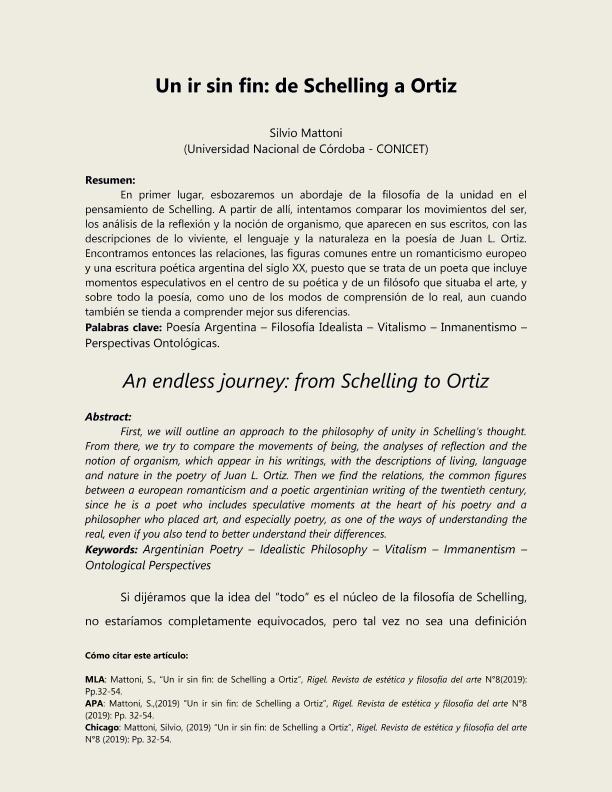Artículo
En primer lugar, esbozaremos un abordaje de la filosofía de la unidad en elpensamiento de Schelling. A partir de allí, intentamos comparar los movimientos del ser,los análisis de la reflexión y la noción de organismo, que aparecen en sus escritos, con las descripciones de lo viviente, el lenguaje y la naturaleza en la poesía de Juan L. Ortiz. Encontramos entonces las relaciones, las figuras comunes entre un romanticismo europeo y una escritura poética argentina del siglo XX, puesto que se trata de un poeta que incluye momentos especulativos en el centro de su poética y de un filósofo que situaba el arte, y sobre todo la poesía, como uno de los modos de comprensión de lo real, aun cuando también se tienda a comprender mejor sus diferencias. First, we will outline an approach to the philosophy of unity in Schelling’s thought. From there, we try to compare the movements of being, the analyses of reflection and the notion of organism, which appear in his writings, with the descriptions of living, language and nature in the poetry of Juan L. Ortiz. Then we find the relations, the common figures between a european romanticism and a poetic argentinian writing of the twentieth century, since he is a poet who includes speculative moments at the heart of his poetry and a philosopher who placed art, and especially poetry, as one of the ways of understanding the real, even if you also tend to better understand their differences.
Un ir sin fin: de Schelling a Ortiz
Título:
An Endless Journey: From Schelling to Ortiz
Fecha de publicación:
12/2019
Editorial:
Universidad Nacional de Catamarca
Revista:
Rigel
ISSN:
2525-1945
Idioma:
Español
Tipo de recurso:
Artículo publicado
Clasificación temática:
Resumen
Palabras clave:
POESÍA ARGENTINA
,
FILOSOFÍA IDEALISTA
,
VITALISMO
,
INMANENTISMO
Archivos asociados
Licencia
Identificadores
Colecciones
Articulos(IDH)
Articulos de INSTITUTO DE HUMANIDADES
Articulos de INSTITUTO DE HUMANIDADES
Citación
Mattoni, Silvio Luis; Un ir sin fin: de Schelling a Ortiz; Universidad Nacional de Catamarca; Rigel; 8; 12-2019; 33-55
Compartir




